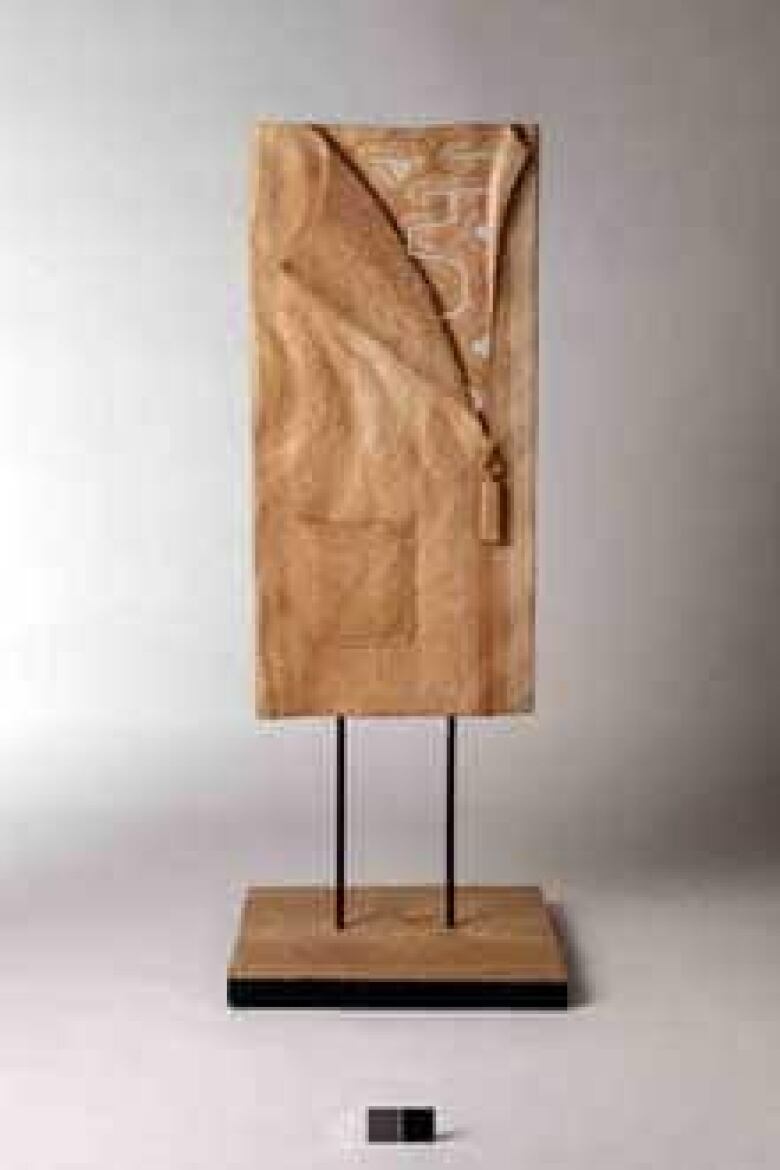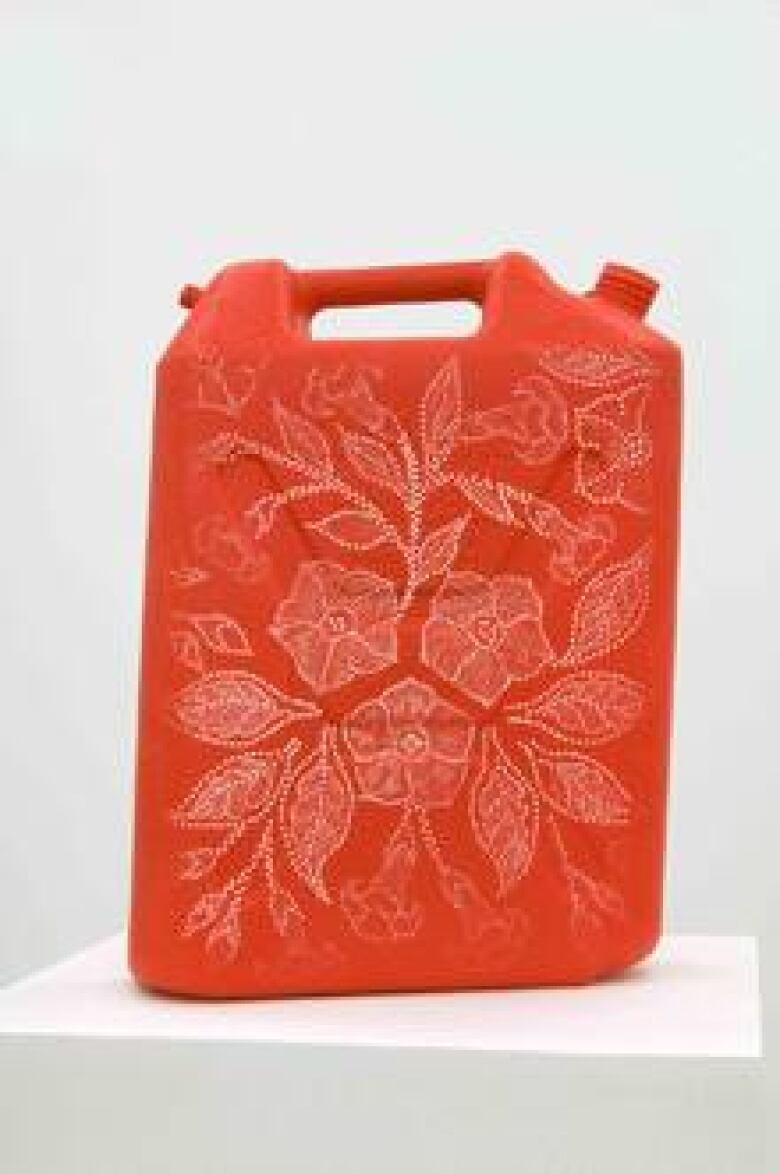Ottawa indigenous art exhibit explores identity and tradition
National Gallery's Sakahan features works by 75 international artists
When National Gallery of Canada curators started pulling together work by indigenous artists from around the world for thesummer exhibit Sakahan, they discovered surprising connections.
The 82 artists featured range from the Maoris of New Zealand to the Sami from Europe's far north to central Canada's Anishinaabe, but many seemed to be exploring the same questions of identity.
All the artists self-identified as indigenous and many spun stories from their personal history or their cultural history into their work, said Candice Hopkins,co-curator of theexhibit.
"An idea you see throughout the exhibition is the idea of identity and autobiography and what that means," she told CBC News.

Toru Kaizawa, an Ainu artist from the Japanese island of Hokkaido, explores these issues in his work Identity 1 (2011). The sculpturedepicts a jacket front with its zipper pulled halfway down. Behind the zippered portion appears designs from traditional Ainu clothing.
"It is a commentary on how you associate yourself with your culture," according to Lalonde. "The zipper shows how you keep your Ainu culture inside of you, but you dont make it apparent."
Exploring the past, evolving traditions
Many of the artists resurrect stories of the past in an effort to recast history, which has long been seen through European eyes. For instance, Fiona Pardington, a New Zealand artist of Maori and Scottish heritage,uncovered thehistory behind life casts created by an explorer who had stopped in New Zealand and Timor in 1830. Though the casts were part of a museum collection, the identities of the people depicted had been lost. Pardingtons artwork Portrait of a Life Cast of Koe (painted), Timor, emerged from her research into the individuals.
"Through her research, the identity of the sitters has been revealed," Hopkins said.
"One was very important in relations between Maori and British. Hed left on a whaling ship and when he came back he had a very good understanding of the British concept of property, so he worked to make sure people didnt lose their rights."
Another strong theme on display taps into tradition including traditional skills, materials and imageryand how the concept of tradition might change over time. These kinds of explorations can become deeply personal, as with Alaskan artist Da-ka-xeen Mehners The Thlinget Artist. After finding an archival photograph of an ancestor who was also an artist,he digitally manipulatedthe imageso that theybothappear in the same pose, on opposite sides, as if it was a mirror image.
"He is reaching back to an ancestor...and putting himself in the image in contemporary terms," Hopkins said.

Brian Jungen, the Vancouver artist of Dane-zaa heritage renowned for his indigenous masks composed of sneakers, is equallywaggish with his work, Nicotine. It features a gasoline can like the ones used to fill a lawn mower or outboard motor carved as if it were a Native artifact.
Personal stories also play a strong role in Marie Watts newly commissioned Blanket Stories series, featuring stacks of blankets, donated from the local community and each with its own story. With the series, the Portland, Ore.-based artist of Seneca ancestry adapts the potlatch tradition in amodern way.
Contemporary reflection
What might startle some visitors is the contemporary nature of most of the work, which willdefy expectations of those expecting traditional depictions, notes Greg Hill, the NGCs curator of indigenous art.
"It will be a surprise to those who are not familiar with contemporary indigenous art. What they have in mind is what theyve seen in museum collections, which would be understandable," he said.
"These artists are also very cognizant that they are contemporary artists, with many other influencesfrom living today [and who bring] all of these elements into their work."
Visitors with preconceptions might discover that "their image of indigenous artists is very much expanded,"he added.
Featuringindigenous art from across the globe, Sakahan opens to the public Friday and continues at Ottawa's National Gallery of Canada until September.












_(720p).jpg)


 OFFICIAL HD MUSIC VIDEO.jpg)
.jpg)



























































































